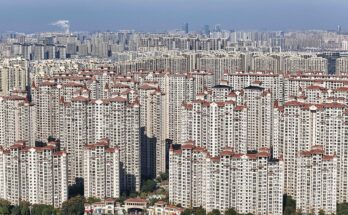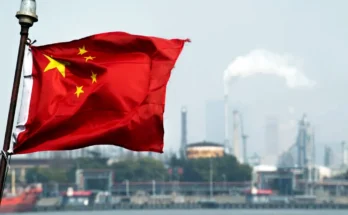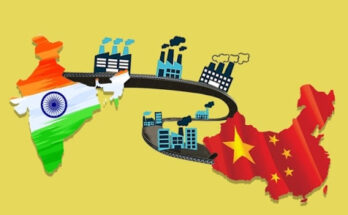While the Sars-COV2 virus had hit the world hard, the economy of our nation has taken a downward surge diving deep through its performances. The distances between social strata have gradually widened which had exposed the ugly face of our falling economy which was been already trailing since 1985 when Dr Manmohan Singh launched the Liberalization, Privatization and Globalization scheme (LPG) to save the face of our nation before its citizens so that the flaws of a capitalist economy can ultimately be covered. According to Professor Himanshu of Jawaharlal Nehru University, “What is particularly worrying in India’s case is that economic inequality is being added to a society that is already fractured along the lines of caste, religion, region and gender”.
However, before going through the reasons that are adding to this inequality, we need to understand the economy of our nation and what had ultimately led to such a drastic consequence within 70 years of independence. Though by an ordinary eye, the mixed economy of Jawaharlal Nehru looked more like a nation friendly economy, the case was not at all that. The Indian bourgeoisie during the pre-independence era had already noted that the British economy had suffered a huge setback after World War II. So, independence was not very far. What they feared was socialism and the awareness of proletariat classes about their rights and freedom. The rising awareness about Communism and the grand success of U.S.S.R. in the World War II under Marshal Joseph Stalin had left the world under no doubt that the most deprived classes of the society can also rise to power and shine with glory. Since then small capitalists of our country before the independence persuaded Congress and tried to woo them at any cost.
In 1944, eight industrialists- J. R. D. Tata, G. D. Birla, Ardeshir Dalal, Shree Ram, Purshottamdas Thakurdas, John Mathai, A. D. Shroff and Kasturbhai Lalbhai assembled in Bombay and passed a draft in Federation of Indian Chambers of Commerce and Industries (FICCI)1. According to this Bombay draft, the industrialists at that period did not have enough wealth to invest in heavy and large-scale industries. So, they wanted the government to take care of these heavy industries and took upon themselves the small and medium scale sectors. Also, hey wanted a tax wall to protect them from the free market due to their lack of enough capability to compete with the free market. The government was endorsed with the duty, on one side they will protect the existence of those capitalists during that era from the global free market and on the other side would promote the growth of individual capital within the nation. As a result, in 1950, the 5- year plan of the Planning Commission depicted the blueprint of the Bombay draft. The government at first took the Railways, Nuclear Research and Defence Sector completely under them.
During the first fifteen years of post-independence, the growth was quite evident. However, it eventually slowed down. Even during this period, the banking sectors, coal mines were still under private ownership. This hampered the economic growth of the nations since the availability of liquid funds were under a few individuals and it was totally under their wish. So, to support the growth of the nation, 14 and 6 banks were nationalized in 1969 and 1980 respectively. As a result, the banking sector grew by 800% and their business increased by 1100%. 2
In 1973, when the coal mines began to be nationalized. During that time the number of employees in Eastern Coals Limited was 1 Lakh 96 Thousand. The total number of mines were 134 (130 underground mines and 4 open casts) from which 20 million tons of coal were produced. In 1978, the production capacity increased further up to 22 million tones with employee’s number decreasing to 1 Lakh 84 Thousand. The same numbers showed a drastic change in 2015 when the production got a huge hike up to 40.01 million tones. Whereas the employee number was slashed to 79 thousand only. In 2019, the production almost doubled as compared to the 80s decade whereas the number of employees was cut reduced almost thrice then3 .
In the meantime, world history has taken a new U-turn. In 1991, problems in the policies of Gorbachev in the U.S.S.R especially Glasnost and Perestroika led to the destruction of Soviet socialism. The whole world seemed to embrace the capitalistic policies making it hype that socialism is unsuccessful. Within 1985, our country also embraced privatization making new markets for the capitalists during those decades. The 5 – year plan of 1985 proposed by the Planning Commission whose Deputy Secretary was Dr Manmohan Singh depicted something like that only. The national wealth that has been accumulated out of its citizens’ labour slowly started being destroyed. The Government services stopped giving its services. The so-called “Economic Reformation” began in 1991 when Dr Manmohan Singh launched New Economic Policies whose main aim was to make the entry of private capital into the common market much easier. The tax wall built during this period was taken off so that both national and international capitalists (under various veils of Globalization and Liberalization) can enter into the free market. The people who once wanted to be under the tax wall now wanted it to be freed. The so-called failure of socialism had already passed on hypes like “Government Schemes and services can never bring about national growth”.
These masterminds ultimately made the path of economic inequality easier. Moreover, foreign organisations like WTO, IMF and World Bank came with their utopian policies to lend us capital to sell our dreams to ourselves. Our national leaders convinced us that these policies would ultimately bring about an economic boom that would finally lead to our dream. Since then for almost 3 decades we have been just changing pseudo leaders who would just apply new techniques- Globalization, Industrialization, Acche Din etc. to convince us of our evil. The struggling class had been forced to suffer under veils of Patriotism and sacrifice. And the national wealth is slowly getting accumulated in a narrow stratum of the society while destroying the public wealth which had been made in the first few decades of independence.

This was the history of our economy. However, to learn about economic inequality a bit more, we need to have a bit deeper look. During the first fifteen years after independence, the problem was not so prone. It was only after the economic stagnation of 1965, the liberalization procedures taken by each of the PMO took the path of slowly disturbing an infrastructure that was quite built and progressed efficiently even after such a worse colonial era under the British empire. The Nehruvian charisma had faded until then. The work was eventually begun by Mrs Indira Gandhi. Then, Mr Rajiv Gandhi, Mr V. P. Singh made it more flexible. Eventually, in 1980, our economy got the utmost so-called independence. Before that India was almost at a severe balance of payments crisis that led to an international default4. Then the freedom to our economy was given by Mr P. V. Narsimha Rao.
Since then India has achieved quite some progress. According to the data by the world bank, the per capita income of India rose from US$ 375 in 1991 to US$ 1700 in 2016. The GDP growth rate had risen from 3.5% in 1950-80 to 5.5% in 1980-92. It was almost around 7.5% in 2015. It became evident that the low performing states were becoming more literate increasing the overall literacy rate of India. People who are usually unaware and unrealized about high economic growths whey about 9.7%. The states of Bihar, Uttar Pradesh, Orissa and Jharkhand have shown an increase in literacy rates by 16.8%, 11.5%, 10.4% and 16.1% respectively5. The female literacy rate also went off a great deal.
However then, what may have happened that ultimately led to degradation in the economic balance of our nation? According to a report of CATO Institute, the major drawback of these policies was Neo-liberalism. People suddenly become exposed to such an environment and it takes time to acclimatize it. The ready availability of liquid cash due to increasing rates of money inflow draws greater attention of people towards it. Thus, the capitalistic nature of the human mind draws more individuals’ attention towards it. Hence, as a result, more and more people ignore governance and becomes hungry for money. Thus, this leads to such liberalism where people get better access to many commodities about whose actual value people don’t even have an idea. This leads to increasing unevenness in society and thus economic inequality also.

Now, let us check out some data that were reported by Oxfam India, a charitable organisation. The richest 10% population of our nation is worth as much as 77% of the total national wealth. 73% of the generated wealth in 2017 went into the hands of 1% of the population while the number of billionaires in our nation raised from 9 in 2000 to 101 in 2017. India is estimated to produce almost 70 new millionaires each day between 2018 to 2022. Not only that, in the last three decades, the fortunes of the most elite class of our country grew by 10 times while on the other side 63 million Indians are pushed into utter poverty due to the health care costs in our country. It is estimated that a minimum wage worker in our nation would require a thousand years to accumulate that much wealth what the richest class of our country has accumulated today.6
Also, according to a video by YouTube channel India times7, the total wealth of 63 billionaires in India (Rs. 29 trillion) is more than the annual budget of the nation (Rs. 24.42 trillion) while the bottom 50% of Indian population owns only 2.8% of national wealth. 30% of the Indian population live in poverty. While the richest person of India, Mr Mukesh Ambani is worth 60 billion USD, India is reported to be at 102nd rank within 117 countries in terms of hunger index. In another interview of DW News, a German news channel, of Oxfam India CEO Amitabh Behar8, our economy has also claimed to be patriarchal and sexist. This is because the system is so rigged and biased that 12.5 billion hours of work per day put in by women in our nation goes unaccounted for and non-valued by our system which is worth almost 3.1% of our GDP. In a video in YouTube channel of independent news OTT platform The Wire9, it is accounted that the participation of women in the labour force of our nation went down from 28.2% in 2004-05 to 21.6% in 2011-12. The wealth of the poorest half of our population grew just by 1%, whose numbers are estimated to be around 67 crore Indian. 4 out of 17 billionaires made in 2017 were just women. Not only just women, but the victim of this system is also the minorities of our population which include Dalits, tribal people and Muslims. In terms of educational attainment, it is reported that tribal people lag 20 years behind others. Thus, it easily is estimated that India, though the 4th largest economy in the world, is a result of an intense unequal economic system with immense loopholes that result in the accumulation of wealth to only a certain section of populations rather than distributing it evenly across its entire populations.
However, though we can see such economic unevenness in our society, how can then these rich elite class continue this accumulation process of capital wealth, even though it is so evident. The major causes behind this issue are the Influence of big business in policymaking and tax evasion. Though being the largest democracy in the world, India has always failed to maintain a balanced level of competition and keep the market free from opportunism. Indian government since independence has been a hub for big business who can manipulate policies according to their needs. As a result, though being the largest democracy in terms of population, it is only democracy for a section of the population- the rich and elite section. Moreover, these people can usually evade taxes due to these influences and other crony political connections. As a result, since 2019-20, we have seen several steps that our government has taken to favour the elite classes only. Instead of removing these economic barriers for the majority of populations, since the first day of our independence, our government usually makes policies that intrigue a variety of cultural stigmas, which favour only a section of the population and ultimately disturb the economic balance in the population.
In recent years, it has directly indulged in splitting the population into economic terms, by introducing policies that dilute the basic civil, political and economic rights of farmers, peasants and labourers and push them towards serious perils of life. Also, these big business heads reduce workers, pay and minimise inputs, thus compromising with the working conditions of its workers for higher returns and hence ultimately maintain his profit share at the same rate. On the other hand, the government in our nations is just taking no steps to improve basic facilities for its citizens. Though our law guarantees us healthcare and education, both systems are just screwed which makes it tougher for individuals to analyse the situations accurately. The healthcare facilities in the majority of places are just disastrous. India is one of the worst-performing states in terms of infant mortality rates. Moreover, in recent years, our government is also releasing no data on important issues like farmer suicide. This ultimately is adding to this problem.
So, to address this issue, we first need to acquire enough data that can increase the transparency about the current situation of our society. We need to analyse the situation properly to find a common solution for our population. Wealth and income inequality is not just a problem in our country. The entire humankind has been suffering from such an issue for almost 2 decades. The issue of student debts in the USA, the Eurozone crisis, the migrant crisis of the Middle-East and the Wall-Street crash are all somewhere or the other related to each other. So in such a situation, if we cannot address this issue critically, the problem will only rise with time and would explode in one day, leading the population to undoubted social collapse.
"The views and opinions expressed in this article are those of the author and do not necessarily represent the views of The Renaissance"
Bilognikoroner Nepotthye by Prasun Banerjee in the magazine Chittorup 45th Edition ↩
Information by blog of Supriyo Roy on LPG of Banking sectors. ↩
Bilognikoroner Nepotthye by Prasun Banerjee in the magazine Chittorup 45th Edition ↩
Article by Niranjan Rajadhyaksha in e-paper The Mint of 18th august 2017 with the caption 70 years of Indian Economy: A whistle of the tour. ↩
Source: CATO Institute article ↩
Report by Oxfam India (URL- https://www.oxfam.org/en/india-extreme-inequality-numbers ↩
URL- https://youtu.be/_E87V0mWPQA ↩
URL- https://youtu.be/izcRFXzoxqY ↩
URL- https://youtu.be/KIK3mB93K8o ↩




